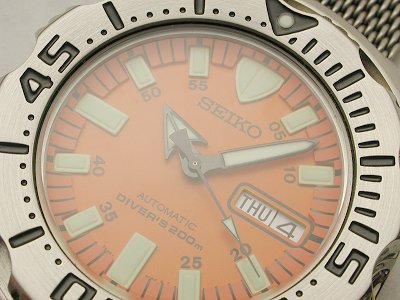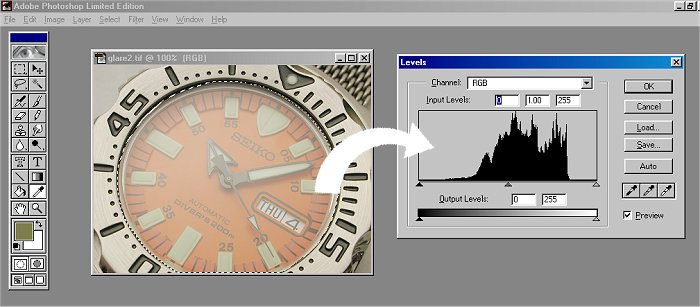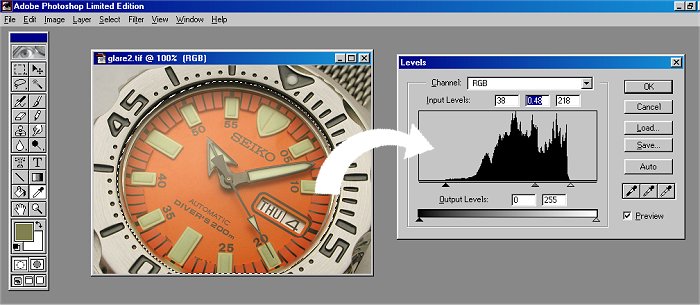

When photographing watches it can be difficult to eliminate reflection, or glare. The multitude of curved and shiny surfaces practically ensure that some light is reflected directly toward the camera. Watch crystals can prove especially problematic. Careful lighting and positioning of the subject and camera can reduce the degree of glare. If there is still more than you desire there is help available in digital post-processing. Below I give an example using the Levels tool in the Photoshop editing suite.

At left is a shot of a watch I took specifically to demonstrate this technique. I have lit the watch obliquely from the rear, ensuring there is plenty of reflection toward the camera. This results in a lot of glare off the crystal, much more than would generally be desirable. This renders the crystal partially opaque rather than transparent and much of the dial detail and colour is effectively hidden.
Below you can see the watch image in a Photoshop screen, ready to be edited. Using the selection tool I selected the dial area so that only that area is affected, (you can see the selection marquee dotted lines around the dial area). On the right of the image is the Levels box open showing a histogram representing the distribution of image information within the selected dial area. Note that very little image info is present toward each end of the scale, with the bulk of the information grouped toward the center. In order to minimise the washed out appearance we want to emphasize the important dial image information.

Below is the same screen with the levels adjusted. You can see that I have moved the small sliders at the bottom of the scale inward from both ends. This has the effect of excluding that unwanted image information. I also adjusted the middle slider somewhat to the right to gain the result I was after. Note the effect this has on the dial image. The degree of adjustments is up to personal preference of what looks "right". You may desire to leave some glare or remove as much of it as possible. Due to the very heavy glare on the original image I needed to make quite large adjustments in this case. When less glare is involved only small adjustments may be required.

Here is the result. Nothing else was done to the image. It has effectively "cut-through" the glare by removing that image information and emphasizing the information we want to see.

I want to emphasize that techniques such as this are not substitutes for good shooting technique. If you attempt to get the best possible image in-camera you will reduce the amount of post-processing required, and most likely end up with a better result. Also, I'm of the opinion that leaving a degree of glare on watch crystals can sometimes be beneficial in lending them some shape as opposed to having them so transparent as to appear to not exist. The choice is up to you, and depends upon the particular subject.
Copyright 2005 Paul Delury